The Impact of Armed Conflict on Women and Girls - UNFPA
The Impact of Armed Conflict on Women and Girls - UNFPA
The Impact of Armed Conflict on Women and Girls - UNFPA
Create successful ePaper yourself
Turn your PDF publications into a flip-book with our unique Google optimized e-Paper software.
the heritage <str<strong>on</strong>g>of</str<strong>on</strong>g> the Ottoman Empire <strong>and</strong> the Kanun <str<strong>on</strong>g>of</str<strong>on</strong>g> Lek Dukagini (Albanian<br />
laws from 15th century), 36 but the roots <str<strong>on</strong>g>of</str<strong>on</strong>g> women´s subordinate positi<strong>on</strong> most<br />
certainly lie much further <strong>and</strong> deeper in history.<br />
Historical Background<br />
Kosovo is a province in Southern Serbia. Its area is 11,000 square<br />
kilometres, surrounded by mountains <strong>on</strong> all sides. It has borders with<br />
Maced<strong>on</strong>ia, Albania <strong>and</strong> M<strong>on</strong>tenegro.<br />
<str<strong>on</strong>g>The</str<strong>on</strong>g> populati<strong>on</strong> is estimated to be about 2 milli<strong>on</strong> people, Albanians being<br />
90-95 per cent <str<strong>on</strong>g>of</str<strong>on</strong>g> the populati<strong>on</strong>, with minorities c<strong>on</strong>stituting 5-10 per cent. In<br />
1971, Serbs <strong>and</strong> M<strong>on</strong>tenegrins c<strong>on</strong>stituted 21 per cent <str<strong>on</strong>g>of</str<strong>on</strong>g> the populati<strong>on</strong> <str<strong>on</strong>g>of</str<strong>on</strong>g><br />
Kosovo. Half <str<strong>on</strong>g>of</str<strong>on</strong>g> the populati<strong>on</strong> is 25 years <str<strong>on</strong>g>of</str<strong>on</strong>g> age <strong>and</strong> younger, 33 per cent are<br />
15 years <strong>and</strong> younger, while <strong>on</strong>ly 8 per cent are 60 years <strong>and</strong> older. 37<br />
<str<strong>on</strong>g>The</str<strong>on</strong>g> Kosovo crisis can be traced to the fall <str<strong>on</strong>g>of</str<strong>on</strong>g> the Ottoman Empire, where it<br />
has cultural, religious, ec<strong>on</strong>omic <strong>and</strong> political roots. Serbs <strong>and</strong> Albanians have<br />
fought over the fertile grounds <str<strong>on</strong>g>of</str<strong>on</strong>g> Kosovo for a l<strong>on</strong>g time. After World War II,<br />
Serbian Communists took power. During the 1970s, political changes took place<br />
that gave the Albanian populati<strong>on</strong> advantageous positi<strong>on</strong>s politically,<br />
ec<strong>on</strong>omically <strong>and</strong> socially. <str<strong>on</strong>g>The</str<strong>on</strong>g> Yugoslav C<strong>on</strong>stituti<strong>on</strong> <str<strong>on</strong>g>of</str<strong>on</strong>g> 1974 almost made<br />
Kosovo a republic, which would have been represented by the federal<br />
presidency. Albanian Communists, however, became more influential than ever<br />
in running the province <str<strong>on</strong>g>of</str<strong>on</strong>g> Kosovo. A few years earlier, in 1970, the University <str<strong>on</strong>g>of</str<strong>on</strong>g><br />
Pristina was established, giving women chances to pursue new life opportunities.<br />
On 28 June 1989, the Yugoslav president Slobodan Milosevic made a<br />
speech to celebrate the 600 th anniversary <str<strong>on</strong>g>of</str<strong>on</strong>g> the battle <str<strong>on</strong>g>of</str<strong>on</strong>g> Kosovo. It marked the<br />
rise <str<strong>on</strong>g>of</str<strong>on</strong>g> extreme nati<strong>on</strong>alism in Serbia <strong>and</strong> the beginning <str<strong>on</strong>g>of</str<strong>on</strong>g> the Kosovo <str<strong>on</strong>g>C<strong>on</strong>flict</str<strong>on</strong>g>.<br />
<str<strong>on</strong>g>The</str<strong>on</strong>g> situati<strong>on</strong> that followed began to worsen in Kosovo. Milosevic restricted the<br />
aut<strong>on</strong>omy <str<strong>on</strong>g>of</str<strong>on</strong>g> Kosovo, <strong>and</strong> thous<strong>and</strong>s <str<strong>on</strong>g>of</str<strong>on</strong>g> Albanians were expelled from their jobs,<br />
which had devastating effects <strong>on</strong> the Albanian populati<strong>on</strong>. 38 Many Albanians fled<br />
to other countries; others began to organize peaceful acts <str<strong>on</strong>g>of</str<strong>on</strong>g> resistance under the<br />
leadership <str<strong>on</strong>g>of</str<strong>on</strong>g> the LDK Movement <strong>and</strong> its chairman Ibrahim Rugova. A parallel<br />
governmental system was organized, illegal electi<strong>on</strong>s were held, <strong>and</strong> Kosovo-<br />
Albanians tried to survive with financial help from Albanians living abroad. 39<br />
<strong>Women</strong> were active in the LDK movement during the 1990s. A women’s<br />
branch organized financial help for widows, assisted old people <strong>and</strong> helped<br />
36 For more about the Lek Dukajini see Noel Malcolm, Kosovo: A Short History (Papermac 1998),<br />
pp. 17-19.<br />
37 <strong>UNFPA</strong> Demographic & Reproductive Health Survey, <strong>UNFPA</strong> Informati<strong>on</strong> sheet.<br />
38 <strong>Women</strong> at Work, pp. 24-26.<br />
39 Judah, Kosovo, pp. 61-98.<br />
80



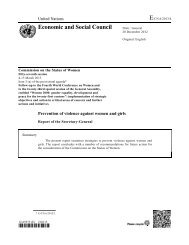
![IANSA [PDF, 2MB] - PeaceWomen](https://img.yumpu.com/25206379/1/190x123/iansa-pdf-2mb-peacewomen.jpg?quality=85)
![Commitments Sample [PDF, 93KB] - PeaceWomen](https://img.yumpu.com/25206331/1/190x245/commitments-sample-pdf-93kb-peacewomen.jpg?quality=85)
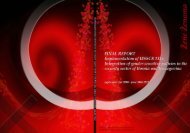
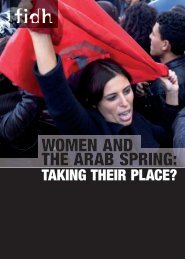
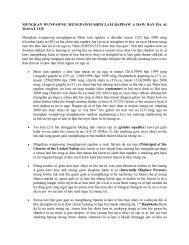
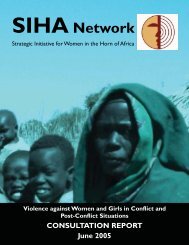

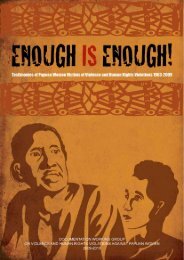

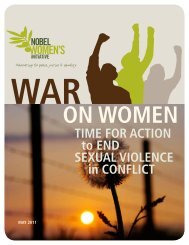
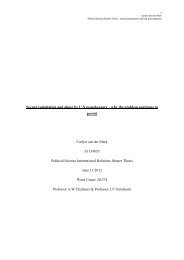

![A Toolkit for Advocacy and Action [PDF, 260KB] - Peace Women](https://img.yumpu.com/25205989/1/190x245/a-toolkit-for-advocacy-and-action-pdf-260kb-peace-women.jpg?quality=85)